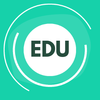I was halfway through Sandra Lollin's interview when she dropped this bomb: "Jobs are traditionally defined top down and they're very rigid. You build a box, you name the box, you put skills and tasks in the box, then you put people in the box and assume that anybody in the box has those skills and can do those tasks."
But of course that's not actually true.
That moment hit different because I realized how many learning programs I've seen built around these "fake jobs" - rigid role definitions that don't reflect how work actually gets done.
Sandra is EPAM's Chief Learning Scientist and has spent 30 years inside a skills-based organization that most people didn't even realize was doing something revolutionary. They've been using skills and task data to make every business decision - hiring, staffing, performance management, learning design - since before "skills-based organization" was even a term.
She revealed something that should transform how every L&D team approaches program design: start with the work to be done, not the job description.
Above is the whole conversation with Sandra from the Digital HR Leaders podcast. Below are my takeaways, because her approach isn't just about organizational design. It's about building learning programs that foster business agility, rather than merely checking compliance boxes.
Your training catalog is solving the wrong problems
Sandra's insight about "fake jobs" reveals why so many learning programs fail to drive performance. We design training around job titles and generic competency models instead of understanding what work actually needs to get done.
The traditional L&D approach:
❌ Start with job descriptions
❌ Map to competency frameworks
❌ Build generic skill assessments
❌ Create role-based learning paths
❌ Measure completion rates
The task intelligence approach:


